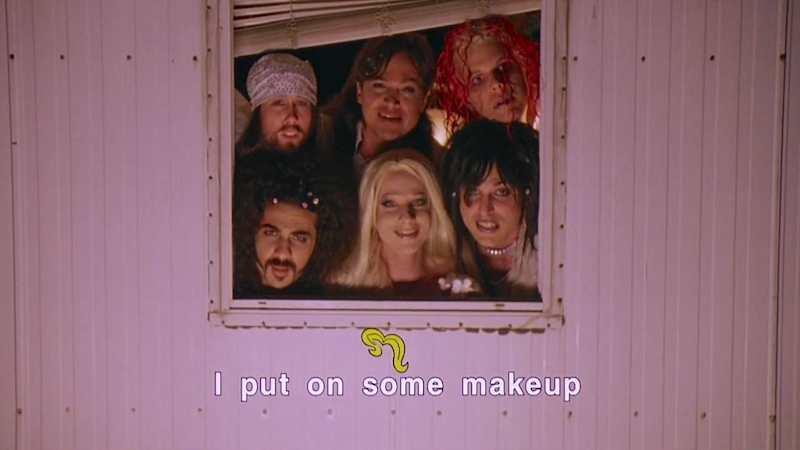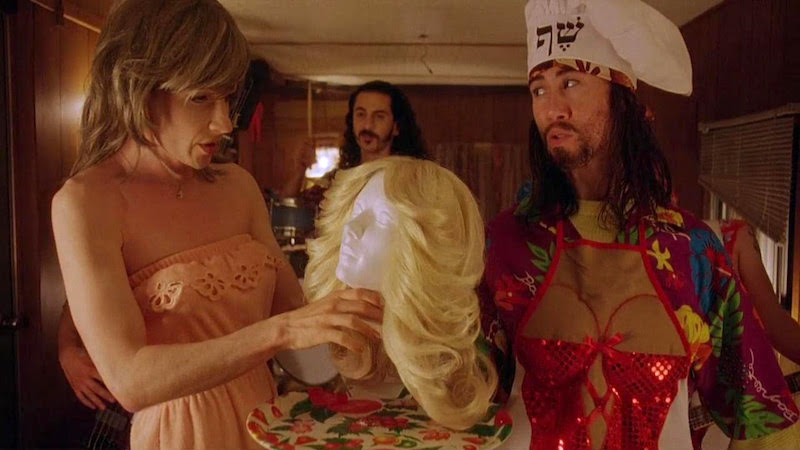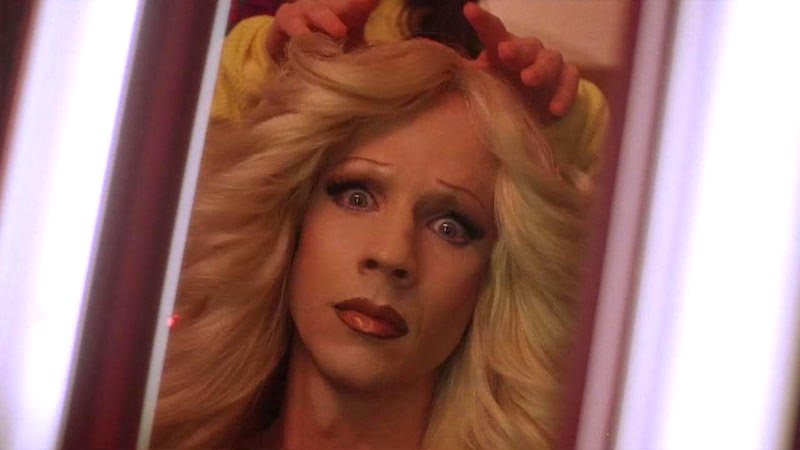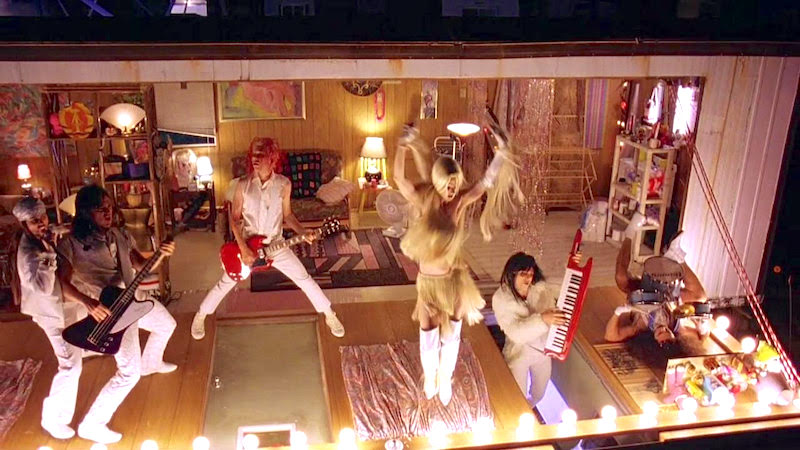Michael Cusumano's series on the great films of the 21st century through the lens of a single scene.

Scene: Wig in a Box
I distinctly remember the arrival of the poster for Hedwig and the Angry Inch at the art-house movie theater I worked at during the Summer of 2001. The poster is dominated by the image of John Cameron Mitchell’s gender-defying punk rocker aggressively belting out a song, a swirl of glittering make-up and tendrils of blonde wig. More than attention-grabbing, it was attention demanding. I eagerly anticipated the film as I watched the trailer several dozen times during my shifts. As a straight, cisgender man from the suburbs with a lackluster wardrobe, I assumed that it was most definitely a movie Not. For. Me. but as an insatiable movie-devouring college student, I was nevertheless excited for what looked like a wildly inventive, low-budget extravaganza.
And while I was correct about the creativity on display, I was wrong about feeling excluded by the film. Despite sharing zero details with the protagonist’s turbulent life story, it hit me personally in a way I wasn’t ready for...

The sing-along portion of "Wig in a Box" could’ve begun with Hedwig declaring “Just the drag queens!” Instead she commands “OK, everybody.” I accepted the open invitation and spent the rest of that Summer repeatedly visiting Tower Records to listen to the soundtrack CD at a listening station (yes, typing this is a strain on my aged fingers, thanks for asking).
Of course, one doesn’t need any deep personal connection to appreciate the skill John Cameron Mitchell brings to the material. He has a foolproof instinct for when to embrace the story’s roots as a one-man show and when to pour on the cinematic dazzle. “Wig in a Box,” Hedwig’s centerpiece number, never feels the least bit stage-bound despite being literally stuck in a trailer for most of its run time. Entrances and exits are staged with a wit and energy that never gives the viewer’s eyes a chance to get bored with the frame, aided by the detailed production design that suggests Wes Anderson by way of John Waters.

Mitchell the performer may play a flamboyant diva, but Mitchell the director never lapses into look-at-me showiness. I imagine one can watch the film a dozen times without noticing that the first shot of the “Wig” is a beautifully choreographed long take lasting a full minute. In fact, I counted just 34 total cuts - and fewer shots - in the entire five-minute number. Yet the sequence never sags. Mitchell makes anything extra feel superfluous.
Style follows substance. The wigs lift Hedwig out of the doldrums of her life in a Midwest trailer park, so the number is mostly grounded at the start and gradually breaks reality until the full band bursts into the trailer with a wig on a platter. Shots become shorter and more stylized after each wig change. Even the names of the wigs themselves suggest a journey away from reality, progressing from “Miss Midwest Midnight Checkout Queen” to “Farrah Fawcett.”

When the trailer transforms into a stage for Hedwig and her band at the song’s climax it’s a thrilling synthesis of the cinematic and the theatrical. Letting the seams of the practical effects show perfetly fits the story’s down and dirty punk aesthetic, and the final shot (another long take this time lasting 49 seconds) captures both the highs and lows of Hedwig's existence, swooping in over the band before landing on a medium shot of Hedwig for her glorious fringe shimmy, then spinning off into a wide shot that ends on the electrical towers surrounding the trailer park.
I realize now I wasn’t prepared to grapple with how hard Hedwig hit me back in 2001. Finding no latent desire to throw on a bra and wig, I suppose I felt comfortable believing I had a certain distance from the material, as if my fandom was a purely objective appreciation of great music and great filmmaking. But the desire to be comfortable in one’s own skin, the search for one’s other half, the courage required to be unapologetically one’s self, these are the deeply meaningful themes what kept me returning to the movie over and over while other films I “appreciated” sat on the shelf. One doesn’t have to share Hedwig’s story to relate to “Wig in a Box” any more than one has to be a cabaret singer in Weimar Germany to feel the yearning in “Maybe This Time”.
Hedwig begins “Wig in a Box” wallowing in the worst of luck and emerges on the other side transformed into a rock goddess. I mean, how does anyone not get excited?

Previously on "The New Classics"
- Y Tu Mama Tambien (2001)
- Sexy Beast (2001)
- Collateral (2004)
- Eastern Promises (2007)
- Michael Clayton (2007)
- Happy-Go-Lucky (2008)
- The Hurt Locker (2009)
- Meek's Cutoff (2010)
- A Separation (2011)
- Blue Ruin (2013)
- 20th Century Women (2016)